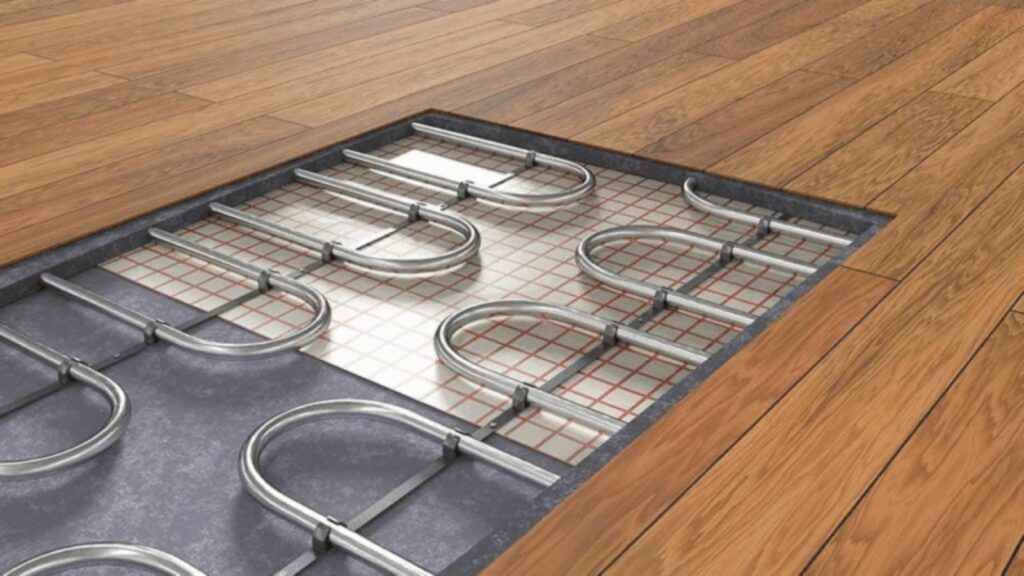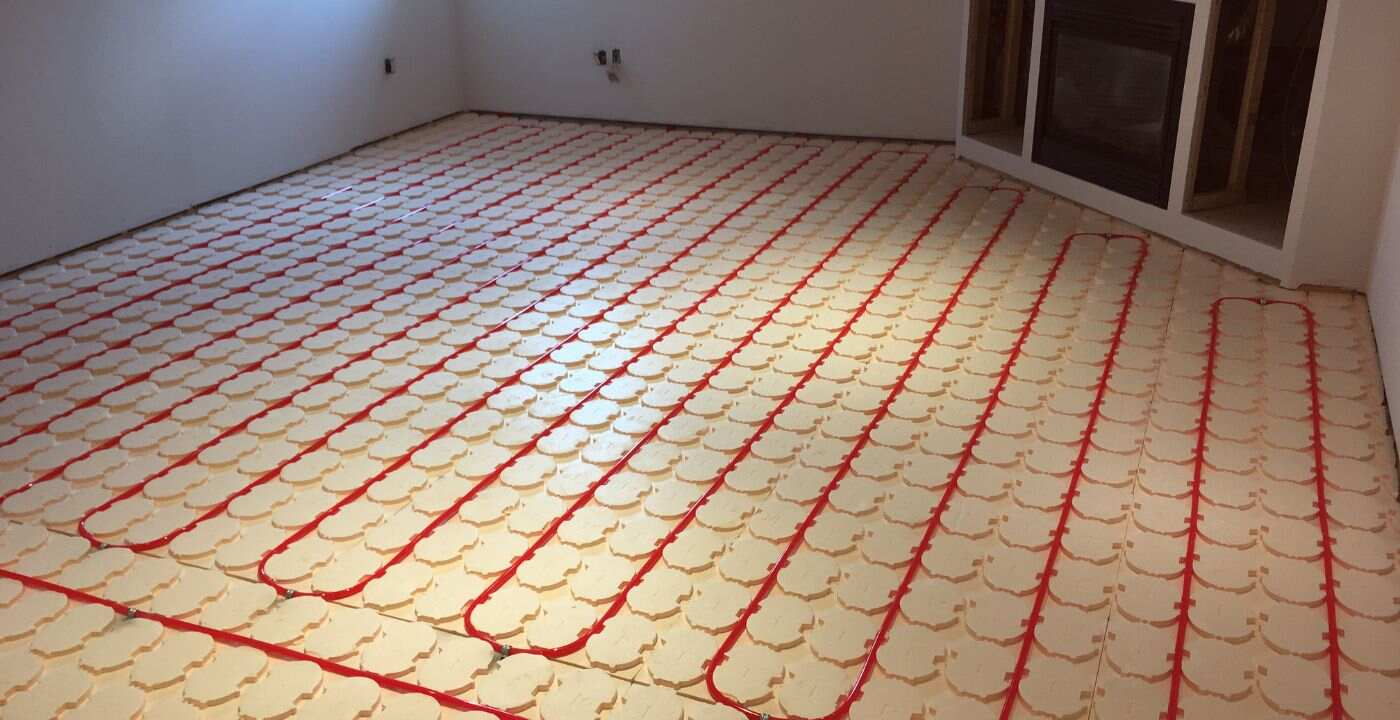
The subfloor plays a quiet but vital role in any building. It is the hidden structural layer between the joists and the finished flooring material, providing the strength and stability necessary for hardwood, tile, vinyl, or carpet to sit securely. Despite this importance, many households still struggle with floors that feel icy during winter.
Cold floors diminish comfort, forcing homeowners to rely on rugs, heavy socks, or even supplemental heaters. Radiant floor heating under subfloor has emerged as a reliable solution, distributing warmth evenly from beneath and transforming the subfloor from a passive support layer into an active source of home comfort. This system not only provides consistent warmth but also enhances energy efficiency, reducing the need for supplemental heating throughout the home.
Why Subfloors Often Feel Cold
Subfloors are commonly built from plywood or oriented strand board (OSB). These materials are durable and cost effective, but they are not designed to retain heat. Even in well insulated homes, subfloors can transfer cold air from crawl spaces or unheated basements into the living area. This is why homeowners frequently notice discomfort in kitchens, living rooms, or bedrooms despite efficient central heating. Standard HVAC systems blow warm air across a room but fail to address the floor surface directly. Radiant heating systems reverse this challenge, targeting the cold at its source.
Even in moderate climates, homeowners with subfloors often notice persistent chill. Rugs or portable heaters only provide temporary relief. A radiant system, however, changes the performance of the entire space by turning the subfloor into a steady source of warmth.
How Radiant Heating Works with Subflooring
Radiant heating systems operate invisibly. Panels or cables are installed under the subfloor, where they gently warm the surface above. Instead of heating the air first, radiant systems apply warmth directly where it is most noticeable at the feet.

This consistent floor level heating spreads naturally upward, ensuring balanced temperatures across the entire room. The result is a stable indoor environment free from drafts or uneven zones often caused by forced air units.
Key Benefits of Radiant Heating Over Subfloors
Compatible with Multiple Flooring Types
Radiant heating over subflooring is highly versatile. Homeowners can install almost any type of finish—luxury vinyl in a kitchen, tile in a bathroom, carpet in a bedroom, or hardwood in a dining area—without worrying about compatibility. The heating system functions seamlessly beneath each material, allowing design freedom without compromising comfort.
Increased Energy Savings
Radiant heating systems operate efficiently at lower temperatures compared to traditional heating. Because the warmth is applied directly to the floor, it is felt immediately where people need it most. This reduces thermostat cycles and lowers energy bills. Over time, homeowners often notice measurable savings, especially in colder climates where heating represents a major household expense.
Healthier Living Conditions
Forced air systems circulate dust, allergens, and other airborne particles. Families with asthma or sensitivities often find these conditions worsen during the heating season. Radiant heating does not blow air; it simply warms surfaces. The result is cleaner indoor air and a healthier environment, especially beneficial for children and elderly residents.
Enhanced Property Value
Homes with radiant heating increasingly attract modern buyers who value efficiency and comfort. In competitive markets, features like underfloor heating can differentiate a property and command higher resale value.
Everyday Comfort in Living Spaces
Radiant heating shows its value in daily routines. Kitchens, often the busiest rooms in a home, become more welcoming. During winter, homeowners often endure cold floors while preparing meals or entertaining. With radiant heating, surfaces remain comfortably warm, turning kitchens into central gathering spaces. Similarly, living rooms and bedrooms benefit, providing families with cozy environments for standing, sitting, or relaxing without extra blankets or heaters.
Installation Insights
Installing radiant heating over subflooring requires planning and precision. Panels or cables must be positioned carefully to guarantee even heat distribution. Moisture barriers may be necessary in certain areas, particularly above crawl spaces. Professional installers bring expertise in selecting the right system for each home and ensuring long term performance. Many homeowners begin their projects by choosing trusted providers such as WBI Warm the radiant panel company, whose specialized systems are tailored for integration with subflooring. Their experience reduces installation risks and maximizes efficiency.
Real Life Case Example
A couple renovating their century old farmhouse illustrates the transformation possible with radiant heating. Despite excellent insulation, their wooden subfloors transmitted cold from the ground, forcing them to scatter rugs throughout the home. Winters were uncomfortable, and their heating bills climbed steadily as they relied on radiators.

After installing radiant panels under the subfloor, the difference was immediate. The kitchen, once avoided during cold mornings, became the family’s favorite gathering space. Friends visiting the farmhouse often commented on the consistent warmth. The couple also reported significant energy savings, as the radiant system consumed less power than their old radiators. This example shows how radiant heating can improve comfort, lifestyle, and household economics.
Durability and Low Maintenance
Radiant systems installed under subflooring are protected by multiple layers, reducing risks of physical damage. Once in place, they require little maintenance. Modern systems can be paired with smart thermostats, giving homeowners precise control of temperatures in each room. This allows for customized heating, keeping bedrooms cooler at night while ensuring kitchens and living rooms stay warm during the day. Over time, the efficiency and low upkeep of radiant heating make it a sound long term investment.
Sustainability and Modern Priorities
As sustainability gains importance, radiant heating over subfloors aligns with eco conscious goals. Systems run at lower temperatures and use energy more efficiently than conventional methods. Many manufacturers now produce eco friendly flooring materials that work seamlessly with radiant systems. Companies such as WBI Warm actively contribute to this effort, offering heating solutions that combine modern comfort with environmental responsibility. By combining efficiency with durable design, radiant subfloor heating supports homeowners and the planet.
Conclusion
Radiant heating applied over subflooring transforms a hidden structural layer into an active contributor to comfort and efficiency. It adapts to all flooring types, reduces energy use, promotes healthier indoor air, and boosts property value. Whether in modern homes or historic renovations, radiant heating over subfloors delivers warmth where it matters most beneath the feet. With professional installation and reliable systems, homeowners can expect decades of comfort and performance.


